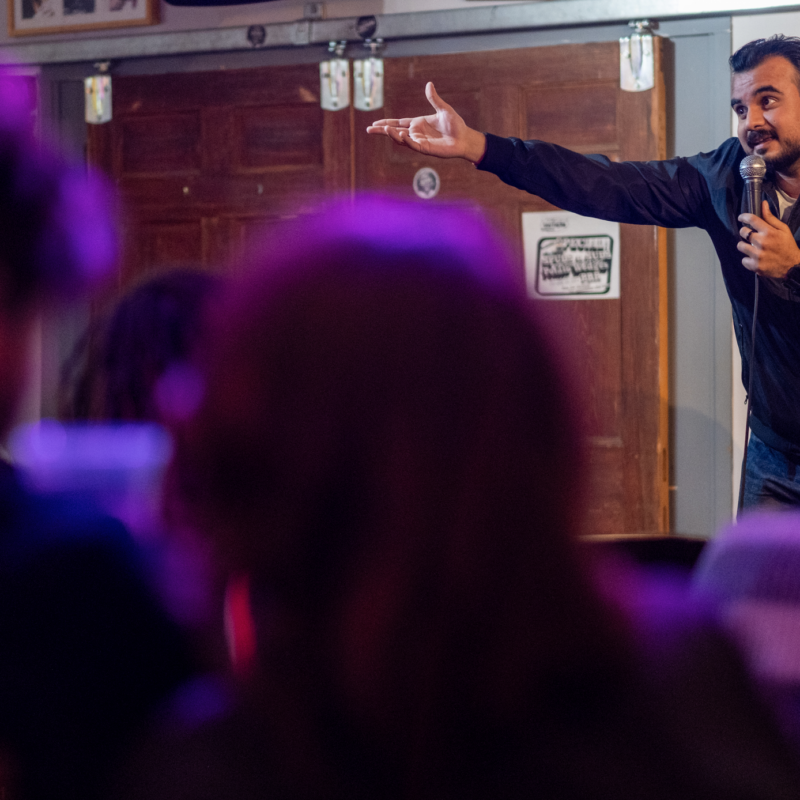Thirty-one years ago, Roger Voisinet moved to Charlottesville from Montreal. He lived near Sugar Hollow, at one end of the single road that bears many names: Sugar Hollow Road, Garth Road, Barracks Road, Preston Avenue, and Market Street.
 |
“Like any newcomer, I would explore the city,” he remembers. One fall day, he was biking around the Woolen Mills neighborhood and stopped to look at a house, one of three similar brick structures with front porches that spill onto the street and backyards stretching toward the Rivanna River. “I was sort of enchanted by the house. I didn’t know who owned it,” he said.
The next year, he moved downtown. At an art opening, he met Chris Murray. “On Christmas Day, the phone rang and it was Chris, who said ‘Do you want to buy my house? I’m moving in two weeks.’” It turned out that Murray’s house was the one Voisinet had admired. He bought it and has lived there ever since, at the opposite end of that road with many names.
The house, built between 1830 and 1850, sits on a steep bank. Over three decades, Voisinet has done extensive renovations, gutting the whole structure and adding new rooms on the back. An upper-story deck is part of a 2005 addition and is one of the best places to survey the scene: the river and the large backyard, crossed by a stream on its way to join the Rivanna. Inspiration, perhaps, for the name Voisinet gave his home: Moon River.
•
“The neighborhood was kind of rough [when I moved here]. Chris Murray was one of the first who came in and tried to fix up houses. Most of the houses have now been fixed up. One Friday night, we were asleep and there was a crash. A car had crashed into the telephone pole. Two guys crawled out; one ended up hiding in the moat around the house. This was 1982 or 1983. The police had to come down and coax him out.
“Inside, [the two similar houses next door] are completely different. These were managers’ houses for the woolen mills. The chapel was the center of the community. The mill closed in the ’50s. Probably the older brick houses [in the neighborhood] were worker housing.
“Part of my backyard is in the city and part is in the county. That stream is the same stream that gives Water Street its name. It goes under Fellini’s.
“The river has been a delight. I had a floating raft I built on four barrels. During a hurricane it floated away. I envision it down in Cuba. And the floods were fun—we used to canoe over the volleyball net. We had a bridge [over the stream] and it would move [in the floods]. Two or three times I’d get a crane and move it back.
“[I used to throw an] annual summer party with the Stoned Wheat Things. Nineteen years out of 25. [In the beginning] it was a celebration of summer, or someone’s birthday…it grew in popularity and attendance until it was hundreds and hundreds of people. Half the people who came I never invited. We had as many as three bands. It was always the weekend after Labor Day. The band would be in the backyard; we’d have a potluck dinner, and people would go all through the house and in the hot tub. Usually the police came at one point.
“[The deck] is a great place to look at the stars. Every season you can see the river, but now is the hardest time. It’s green, which has its own pleasures. It’s a great place for cocktail parties.
“There’s a couple beautiful dogs buried in the backyard that lived and died here. I’ve had cattle in the backyard from the Hogwaller stockyards. But [these days], deer have started arriving. We have a fox. We see herons and ducks, eagles occasionally. Once I opened the door and a snake was right on the door. Never do they get inside, though.
“This house is on the edge of things—city and county, water and land, historical and new. In ecological terms that’s where all the action is, at the edges.”





